by
Dr. Robert Gorter, et al.
Robert Gorter, MD, PhD, is emeritus professor of the University of California San Francisco Medical School (UCSF)
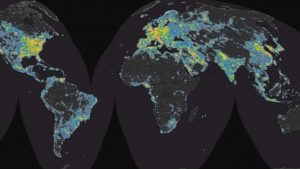
99% of Europe’s population experiences an artificial glow in the night sky that prevents them to see the starry skies at night
Light pollution, also known as photo-pollution or luminous pollution, is excessive, misdirected, or obtrusive artificial light. Pollution is the adding-of/added light itself, in analogy to added sound, carbon dioxide, methane by cattle, etc. Adverse consequences are multiple; some of them may not be known yet.
Light pollution is a side effect of industrialized civilization. Its sources include building exterior and interior lighting, advertising, commercial properties, offices, factories, streetlights, and illuminated sporting venues. It is most severe in highly industrialized, densely populated areas of North America, Europe, and Japan and in major cities in the Middle East and North Africa like Tehran and Cairo, but even relatively small amounts of light can be noticed and create problems for humans and wild-life alike
Dr. Robert Gorter: “Light pollution is now a global phenomenon and disrupts the circadian rhythm in all humans in industrialized nations. Melatonin production becomes decreased and therefore, immune suppression is on the rise and the first signs are surfacing. Disruption of the circadian rhythm in humans, the incidence of chronic disease and malignancies are on the rise as a direct consequence of increasing immune suppression.”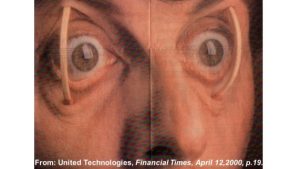
https://peperperspective.com/2016/06/18/improve-your-sight-avoid-the-epidemic-of-eye-irritation-and-compromised-vision/www.bbc.com/news/science-environment-36492596news.nationalgeographic.com/…/0417_030417_tvlightpollution.htmlhttps://en.wikipedia.org/wiki/Light_pollution
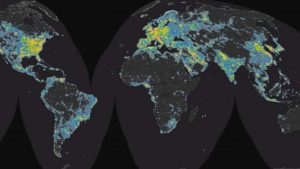
A composite satellite image of Earth at night in 2016
Scientists explain in Science Advances how ground measurements and satellite data were used to create an atlas of a world brightened by artificial lights.
It reveals that the population of Singapore, Kuwait and Qatar experience the brightest night skies.
Conversely, people living in Chad, Central African Republic and Madagascar are least affected by light pollution.
Dr. Christopher Kyba, from the renouned German Max Planck Research Center for Geosciences in Potsdam, said: “The artificial light in our environment is coming from a lot of different things: “Street lights are a really important component, but we also have lights from our windows in our homes and businesses, from the headlights of our cars and illuminated billboards.”
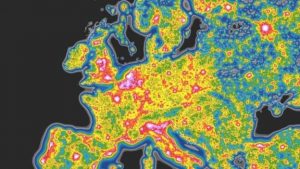
99% of Europe’s population experiences an artificial glow in the night sky that prevents them to see the starry skies at night
The brightness map reveals that 83% of the world’s population, and 99% of Europeans and people in the US, live under skies nearly 10% brighter than their natural starry state
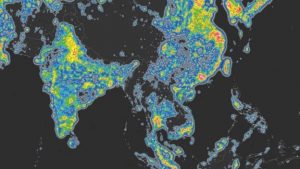
About 14% of the world’s population don’t even use their night-time vision
The night is so bright that they use their color daytime vision to look up at the sky. In Singapore, the entire population lives under this extreme level of artificial night-time brightness, and it is a problem affecting many other parts of the world. 20% percent of the people in Europe and 37% of the people in the USA don’t use their night vision
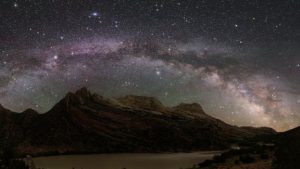
The researchers add that light pollution is hindering astronomy: and a third of the world population never see the Milky Way anymore.
Dr. Gorter: “It is a growing problem due to the severe disruption (destruction) of the circadian rhytms of humans and animals alike.”
Dr. Kyba: “In the UK, 26% of people are using colour vision and not night vision.”
Dr. Gorter and his colleagues warn that nights that never get darker than twilight are affecting nocturnal animals, while in humans, the trend has been linked to sleep disorders and disease.
Dr Kyba said that while lighting was important for development and safety, technology needed to improve.
“There are a lot of street lights that are not particularly well designed,” he explained.
“They shine light into areas that are not useful – so up into the sky, for example, isn’t really useful for anybody.
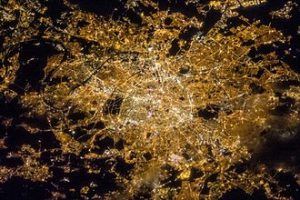
Satellite view of the center of Paris at night (France)
Light pollution, also known as photo-pollution or luminous pollution, is excessive, misdirected, or obtrusive artificial light. Pollution is the adding-of/added light itself, in analogy to added sound, carbon dioxide, etc. Adverse consequences are multiple; some of them may not be known yet. Scientific definitions thus include the following: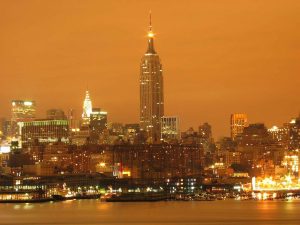
This time-exposure photo of New York City at night shows “sky glow,” one form of light pollution.
Light pollution is the alteration of light levels in the outdoor environment (from those present naturally) due to man-made sources of light. Indoor light pollution is such alteration of light levels in the indoor environment due to sources of light, which compromises human health.

In pristine areas, clouds appear black and blot out the stars. In urban areas, clouds strongly enhance “sky glow.”
Light pollution is the introduction by humans, directly or indirectly, of artificial light into the environment.
The first three of the above four scientific definitions describe the state of the environment. The fourth (and newest) one describes the process of polluting by light.
Light pollution competes with starlight in the night sky for urban residents, interferes with astronomical observatories, and, like any other form of pollution, disrupts ecosystems and has adverse health effects. Light pollution can be divided into two main types:[citation needed]
Excessive light (generally indoors) that leads to discomfort and adverse health effects (like suppression of melatonin production),
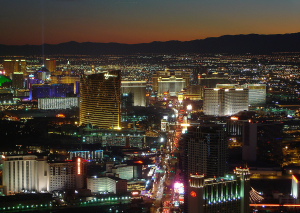
The Las Vegas Strip displays excessive groupings of colorful lights. This is a classic example of “light clutter.”
Light pollution is a side effect of industrialized civilization. Its sources include building exterior and interior lighting, advertising, commercial properties, offices, factories, streetlights, and illuminated sporting venues. It is most severe in highly industrialized, densely populated areas of North America, Europe, and Japan and in major cities in the Middle East and North Africa like Tehran and Cairo, but even relatively small amounts of light can be noticed and create problems. Since the early 1980s, a global dark-sky movement has emerged, with concerned people campaigning to reduce the amount of light pollution. The International Dark-Sky Association (IDA) is one non-profit advocacy group involved in this movement.
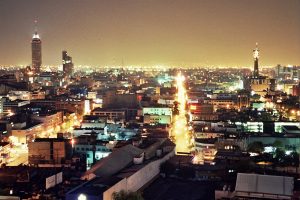
Mexico City at night, with a brightly illuminated sky (2015)
Wildlife species have evolved on this planet with biological rhythms—changing that has profound effects
Artificial lighting seems to be taking the largest toll on bird populations. Nocturnal birds use the moon and stars for navigation during their bi-annual migrations.
When they fly through a brightly-lit area, they become disoriented. Birds often crash into brilliantly-lit broadcast towers or buildings, or circle them until they drop from exhaustion.
Over 450 bird species that migrate at night across North America and Europe are susceptible to collisions with night-lit towers, including threatened or endangered species.
“Seabirds are also at risk,” said Bill Montevecchi, a marine ornithologist at Memorial University of Newfoundland, in St. John’s, Canada. “Some, like the tiny Leach’s storm petrel, feed offshore on bioluminescent plankton—so are particularly drawn to light. The birds may be fatally attracted to lighthouses, offshore drilling platforms, and the high-intensity lamps used by fishermen to lure squid to the surface.”
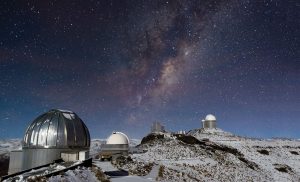
Outskirts of the Atacama Desert, far from the light-polluted cities of northern Chile, the skies are pitch-black after sunset
For humans, the most worrisome insights revealed by the atlas are the effects of an ongoing shift to light-emitting diodes—LEDs—as sources of outdoor light over older incandescent illumination. LEDs are far more energy efficient, durable and dynamically adjustable than incandescent bulbs, and the U.S.A. and the EU and several other nations are aggressively incentivizing their use. The most economical LEDs, however, shine brightest in harsh blue-white hues. Because Earth’s atmosphere preferentially scatters blue light (for proof, just look up into a clear sunlit sky), Falchi’s model suggests that a large-scale conversion to cheap blue-white LEDs for outdoor lighting could substantially increase sky glow even if the total amount of emitted light remains constant. Besides being aesthetically unappealing to many people, there is concern that blue-white LED light may also be dangerous. Humans have peak visual sensitivity to the yellow and green parts of the visible spectrum, says George Brainard, a photobiologist at Thomas Jefferson University who was not involve with Falchi’s study. But it is blue-white light—exactly of the sort most produced by cheap LEDs—that dominates the regulation of human circadian rhythms and other important biological cycles, Brainard says. “The wide-scale adoption of LEDs will reap huge energy savings, which is a good thing,” Brainard says. “The question is, are the great energy savings compromising human health and ecosystems?”
The problem is that the strong blue content of the white light in municipal LED installations scatters much more efficiently through Earth’s atmosphere, compared to other colors. “Models suggest that, when matched for the same total output of light, converting city lighting systems to white LED has the potential to significantly increase sky glow over cities,” says Barentine.
Why the big push for white LED lighting?
Many people believe that better visibility improves safety by reducing car accidents and criminal activity. Although this assertion seems reasonable, it is, however, false. No research data backs up these beliefs. Studies done in the UK, Chicago, and other cities confirm that no correlation exists between increased lighting and reduced car accidents or crime, including sexual assault.
What has been proven are the negative health and environmental impacts that can result from excessive lighting. Growing evidence shows that too much intrusive light at night disrupts our natural circadian rhythms, which can lead to fatigue and other serious health issues. For example, a study by Israeli researchers in 2011 showed that women who live in light-saturated neighborhoods had higher breast cancer rates, suggesting that excessive nighttime lighting (often from LEDs) interferes with the brain’s production of melatonin. The American Medical Association even issued a statement that “exposure to excessive light at night, including extended use of various electronic media, can disrupt sleep or exacerbate sleep disorders, especially in children and adolescents.”
Extensive evidence also shows that excessive artificial lighting disrupts the behavior patterns of nocturnal animals. LED lighting can interfere with their instinctual hunting and survival patterns, putting them at risk. “The various nocturnal species that populate our planet have spectral sensitivities to optical radiation different from those of humans,” says Rea. “For example, most nocturnal species have no long-wavelength-sensitive photoreceptors. Therefore, the impact of short-wavelength radiation could be more debilitating to these nocturnal species than to humans.”
Dr. Robert Gorter answers: “Yes, definitely and the first signs are surfacing. By disruption of the circadian rhythm in humans, chronic disease and malignancies are on the rise as a direct consequence of immune suppression.”
The following article by my friend and excellent researcher, Erik Peper, PhD,who is a professor at San Francisco State University, California, is very significant and the content extremely important to all of us who are professionals and want to stay healthy and productive till the last day……
Erik Peper:
Common complaints or observations of our times:
Sleep has become more and more elusive since checking my cellphone in bed.
Ouch, my eyes hurt when I flipped the light switch on and the room was flooded with light.
After working on my computer screen, the world looked blurry.
At night, the intense blue white LED headlights blinded me unlike the normal incandescent headlights.
My eyes become irritated and dry after looking at the computer screen.
More and more people are myopic and wear contacts lenses.
Many older people are suffering from macular degeneration and may go blind.
Migraine pain significantly decreased when a person looks at soft green light and significantly increased when looking at bright white light (Hamzelou, 2016).
Vision problems are becoming more and more frequent. More and more children are near sighted and need vision correction while macular degeneration–a major cause of blindness for older adults–is becoming more prevalent (Schneider, 2016). As we look ahead into the future, a new epidemic is starting to roll in—compromised vision. Major culprits include:
Near visual stress caused by looking intensely at surfaces or objects one to two feet away such as computer screens, tablets and cell phones inhibits the eyes to relax and increases near sightedness (Fernández-Montero et al, 2015).
Absence of visual relaxation and shifting focus from close to far distance. This ongoing increased focus decreases blinking rate and exhausts the eyes.
Absence of looking at the green coloring of vegetation that historically predominated our visual environment–a color that is relaxing for the eyes and body especially when looked from a distance.
Sleep suppression and disturbance caused working/reading/watching the LED screens (computer screen, tablet, cell phone, TV, or e-readers such as Amazon Kindle Fire or any tablet) before going to bed (Tosini et al, 2016). The blue light component produced by the LED screen suppresses melatonin production and interferes with sleep onset.
Extreme variation in light intensity damages the retina. The pupil which normally contracts to protect the retina as light intensity increases is too slow to respond to the sharp changes in light intensity. This is very similar to looking at the sun during a solar eclipse without eye protection. The intense sun light literally will burn/damage the retina and can induce blindness.
Harmful exposure of the blue light component of the LED screens or light bulbs may increase inflammation and damage to the macular area of the retina. This is often labeled as toxic blue light with a wavelength of 415-455nm (Roberts, 2011).
The light that illuminates our visual world and how our world conditions us to use our eyes is totally different from how our eyes evolved over the last million years. Although our present life is far removed from our evolutionary past, our evolutionary past is embedded within us and controls much of our biology and psychology. Consider how we used to live for millennia.
I look up and see vultures circling. It is not too far. I rapidly walk in the direction. I have a sense where the possible food source could be. As I walk I alternately look at the distance and close at the ground and scrubs. I continually scan the environment. Although there are shadows where I look the light is of somewhat similar intensity unless I look directly at the sun. While doing tasks I focus ahead where I will plant my feet or at my food or objects my hands are manipulating. I alternately shift from foreground to background. As I look in the distance and the many green plants, my eyes relax.
In the morning, the natural light wakes me. The bright morning light wakes me, I stretch and move. As the day progresses the light becomes brighter, then at sunset the light becomes softer and the yellow orange red spectrum predominates.
Whether we lived twenty thousand years ago in caves or communities, or two hundred years ago in small houses in cities or farms, sunlight illuminated our world. The sun light warms us, is necessary for vitamin D production and controls our biological circadian rhythms. The sun light and sometime the moonlight provided the only source of illumination. Generally, we woke up with the light and went to sleep when the light disappeared. For thousands of years human beings have attempted to bring light to the darkness to reduce danger. Light produced by fire for cooking and protection against predators, and some form of oil lamps to provide minimal illumination. These light sources were predominantly red and yellow. It was only with the application of gas and electrical illumination that lights could become brighter. Usually the light transitions were slow and gentle which allowed the ciliary muscles of the iris to contract thus making the pupil much smaller and reduce the influx of light to the retina and thereby protected the retina from excessive fluctuating light intensity.
Exposure to light in the evening or night is very recent in evolutionary terms. For hundreds of thousands of years the night was dark as we hid away in caves to avoid predators. And, the darkness allowed our eyes to regenerate. Only in the last few thousand years did candles or oil lamps with their yellow orange light illuminate the dark. The fear of the dark is primordial– in the dark we were the prey. During those prehistoric times, our fear was reduced by huddling together for warmth and safety as we slept. These days, while sleeping we turn on a night light to feel safe or allow us to see in case we have to get up. For many of us, darkness still feels unsafe since as babies the fear was amplified as we slept alone in a crib without feeling the tactile signals of safety provided by direct human contact.
Now most people live and work indoors and we are no longer exposed to direct or indirect sun light. Instead, we can illuminate our work and personal world twenty four hours a day and total darkness is elusive. Even when I close the shades in my bedroom, the blinking light of the smartphone charger, and the headlights of the cars passing by penetrate the darkness. While entering a dark room, we throw the switch and the room instantly is flooded with light. This instant transition to full light pains the eyes as the eyes struggle to adapt by closing the iris. The retina was already impacted. This may be one of the covert factors that contribute to the development of macular degeneration?
Historically, we mainly looked at reflected light and almost never at the light source such as the sun. Now we predominantly look directly into the light source of the light bulb, TV, computer, laptop, e-readers and smart phone screens. We are unaware that the light we see is not the same type of light as natural sun light. It still appears white; however, it is an illusion. We live most of our lives indoors illuminated by incandescent, fluorescent and LED light sources. These lights have limited spectrums and may lead to light malnutrition and blue light poisoning.
The most recent change has been the use of light-emitting diode (LED)–an electronic semiconductor device that emits light when an electric current passes through it. This is the process of flat TV, computer, tablet, cellphone screens and LED light bulbs. These bulbs are highly energy efficient and thus are being installed everywhere but are a significant health hazard which is described superbly and in detail at the end of the article by architect and lighting expert Milena Simeonova, www.lighting4health.com
What can you do to protect your eyes and improve your vision?
Use your eyes as much as possible as we did through most of our evolutionary history which means:
Read and implement the practices described in the superb book, Vision for Life: Ten Steps to Natural Eyesight Improvement., by Meir Schneider which has helped thousands of people maintain and improve their vision.
Take many vision breaks and look away from your screen. If possible look at the far distance and green plants and trees to relax your eyes.
Do NOT use LED e-reader; instead, use e-readers that can be read by reflective light such as Amazon Kindle Paperwhite eReader.
Block direct intense light sources. Arrange them so that they illuminate the walls and you only see gradual light gradients of reflective light.
Install warm LED light (particularly for evening time) which have much less damaging blue light.
Install software such as flux on your computer that automatically adjusts your screen’s color-temperature depending on the time of day and your location. Thus, when the sun sets, the colors of the screen change and become more yellow, orange, and red thereby reducing the transmitted blue light (Robinson, 2015).
Limit screen time and increase movement and physical activity time.
Blink and blink more and relax your eyes. When visually stressed, blinking is inhibited because you do not want to miss the tiger who potentially could attack you. That is our evolutionary response pattern; however, there are no life threatening tigers around, thus allow yourself to blink. Do the following exercise to experience how your eyes change depending how you open and close them.
You have a choice! You can mobilize health or continue to risk your vision. Adapt the precautionary principle and act now. See the in-depth description of the potential harm of LED lights described by architect and lighting designer Milena Simeonova who helps people stay healthy by applying natural light patterns inside buildings (www.lighting4health.com).
LED Lighting and Blue Light Hazard
When TVs, computers, tablets, and mobile devices are used in the evening hours, the cool LED light emanating from the screens shifts the body onset for melatonin production, pushing back our bed time by 1-1.5hr or later. You may think that’s not bad, if you have to study for exams or deliver this final project. Think twice when disrupting the circadian system and depriving your body of normal sleep hours. It is a recipe for initiating illness. Watch the superb TEDxCambridge 2011 lecture, A Sleep Epidemic, by Charles Szeisler, PhD, MD from Harvard Medical School.
(https://www.youtube.com/watch?v=p4UxLpoNCxU)
Science has discovered that Blue light suppresses melatonin (the sleep hormone), and can either regulate or deregulate our circadian system (bio-clock), disrupting our sleep during the night, and lowering our performance during the day. It affects our normal body function that is synchronized with the daylight-night cycle as shown in Figure 1. If this cycle is disrupted, poor health follows in the form of heart disease, cancer, depression, obesity, etc.

Figure 1: Double plot (2 x 24 hours.) of typical daily rhythms of body temperature, melatonin, cortisol, and alertness in humans for a natural 24-hour light/dark cycle. Our circadian system regulates the body’s endocrine and hormonal production; these functions are synchronized with the cycle of day-night in Nature. A healthy body starts producing Melatonin at about 7pm and melatonin (sleep hormone) peaks at 12am-3am. From: van Bommel, W. J. M. & van den Beld, G. J. (2003). Lighting for work: visual and biological effects. Philips Lighting. p.7.
What about the change from incandescent to LED light in the room? With LED lighting, the Blue Light Hazard has increased, particularly from high output cool LED light fixtures with clear lens. LED lighting is produced from a Blue LED chip combined with warm phosphors; think of it as a Blue spike with a warm tail (see Figure 2). The trouble with the Blue spike is that it peaks at about 430nm-440nm, and science has found that light below the 440nm wavelength frequency, results in macular degeneration in older people (Roberts, 2001). For more detail, see Chemistry Professor Joan E. Roberts from Fordham University presentation, How does the spectrum of light affects the human health? http://www.be-exchange.org/media/ByLightofDay_Presentation.compressed-1.pdf
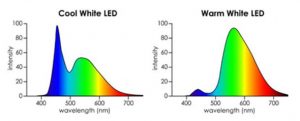
Figure 2: Actual measurements with LED Spectrometer of color tuning LED light source. On the left is cool LED light with big Blue light spike (big output of Blue light) and a small warm tail of phosphors. On the right is a warm LED light with decreased Blue Light output. From: Floroiu, V.A. (2015).
The health risk is even greater for younger eyes (ages 20-40) because the older eyes are more protected with the natural aging of the eye lens that is thickening and yellowing, which in turn scatters Blue light and protects the eye retina from energy absorption. In contrast, the younger eyes allow 2-3 times more transmittance of Blue light, resulting in higher ocular oxidation and greater risk of retinal photo-degradation (Hammond et al, 2014). Thus in a room lighted with cool LED lighting (above 4000K), there will be a lot of Blue light that can be damaging to the eye retina. This is particularly true, when eyes have direct exposure to high output LED fixtures that are non-dimmable.
This is just the tip of the iceberg, as LED lighting has other potential health issues, such as flicker that is barely discernible at full light output, but increases when dimming the lights; or the spatial flicker resulting from the gazing along bright LED lights in a room; or the multi-fringed or multiple shadows of a single object, projected from the multiple LED chips in a fixture, that is unnatural and not observed in Nature. It is important to choose LED lighting that maintains human health. (See: https://www.greenbiz.com/blog/2010/01/21/pendulum-energy-efficiency-and-importance-human-factors)
Interactive and dynamic lighting are also on the rise, and will have unintended effects on the Autonomous Nervous System (ANS) with over-stimulating the Sympathetic neural system, disrupting the balance of arousal and rest that is needed for people to stay healthy.
How can we protect our health? For now, use 4000K LED light for daytime, use warmer lights 3000K and below for the evening hours; use as night light warm or amber-color light; get blue light filter apps for your screens; dim your room lights in the evening, use LED lights that have a diffuse lens, shade to soften the light beam; aim LED lights to the ceiling or wall surfaces, and away from the eyes; and best of all – get plenty of healthy daylight during the day.
The mechanism of Blue Light Hazard (BLH). Blue light also known as “cool” light, has a high frequency of oscillation, high excitation of its light particles or photons. The “blue” photons have smaller mass, and carry significantly higher energy than the red light photons, blue photons can create oxidative photo-degradation in ocular tissues, and suppress effectively melatonin and disrupt sleep even at very low level.
The colors of a rainbow illustrate the visible Light Spectrum. Each color represents a specific light frequency, vibrational energy, wavelength, and excitation. Light wavelength can be for the benefit or to the detriment of human health, depending on the dosage or length of exposure to the particular wavelength of light; and depending on the timing or when exposed to light.
Visible light spectrum ranges from 360nm to 760nm wavelengths; with Red light (620-750nm) having the longer wavelength and smaller excitation, and Blue light (420-490nm) having a short wavelength with high frequency (more pulses/time).
American Medical Association Adopts Community Guidance to Reduce the Harmful Human and Environmental Effects of High Intensity Street Lighting (June 16th, 2016)
AMA: Strong arguments exist for overhauling the lighting systems on U.S. roadways with light emitting diodes (LED), but conversions to improper LED technology can have adverse consequences. In response, physicians at the Annual Meeting of the American Medical Association (AMA) adopted guidance for communities on selecting among LED lighting options to minimize potential harmful human and environmental effects (Chicago, June 16th, 2016).
Converting conventional street light to energy efficient LED lighting leads to cost and energy savings, and a lower reliance on fossil-based fuels. Approximately 10 percent of existing U.S. street lighting has been converted to solid state LED technology, with efforts underway to accelerate this conversion.
“Despite the energy efficiency benefits, some LED lights are harmful when used as street lighting,” AMA Board Member Maya A. Babu, M.D., M.B.A. “The new AMA guidance encourages proper attention to optimal design and engineering features when converting to LED lighting that minimize detrimental health and environmental effects.”
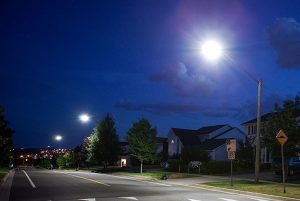
A street with LED roadway lights. (Photo: Ryan Pyle/Getty Images)
High-intensity LED lighting designs emit a large amount of blue light that appears white to the naked eye and create worse nighttime glare than conventional lighting. Discomfort and disability from intense, blue-rich LED lighting can decrease visual acuity and safety, resulting in concerns and creating a road hazard.
In addition to its impact on drivers, blue-rich LED streetlights operate at a wavelength that most adversely suppresses melatonin during night. It is estimated that white LED lamps have five times greater impact on circadian sleep rhythms than conventional street lamps. Recent large surveys found that brighter residential nighttime lighting is associated with reduced sleep times, dissatisfaction with sleep quality, excessive sleepiness, impaired daytime functioning and obesity.
The detrimental effects of high-intensity LED lighting are not limited to humans. Excessive outdoor lighting disrupts many species that need a dark environment. For instance, poorly designed LED lighting disorients some bird, insect, turtle and fish species, and U.S. national parks have adopted optimal lighting designs and practices that minimize the effects of light pollution on the environment.
Recognizing the detrimental effects of poorly-designed, high-intensity LED lighting, the AMA encourages communities to minimize and control blue-rich environmental lighting by using the lowest emission of blue light possible to reduce glare. The AMA recommends an intensity threshold for optimal LED lighting that minimizes blue-rich light. The AMA also recommends all LED lighting should be properly shielded to minimize glare and detrimental human health and environmental effects, and consideration should be given to utilize the ability of LED lighting to be dimmed for off-peak time periods.
The guidance adopted today by grassroots physicians who comprise the AMA’s policy-making body strengthens the AMA’s policy stand against light pollution and public awareness of the adverse health and environmental effects of pervasive nighttime lighting.
References:
Hamzelou, J. (2016). Green light eases migraine pain – but we don’t know why. New Scientist. 19 May 2016. https://www.newscientist.com/article/2089062-green-light-found-to-ease-the-pain-of-migraine/
Fernández-Montero, A., Olmo-Jimenez, J. M., Olmo, N., Bes-Rastrollo, M., Moreno-Galarraga, L., Moreno-Montañés, J., & Martínez-González, M. A. (2015). The impact of computer use in myopia progression: A cohort study in Spain. Preventive medicine, 71, 67-71.
Hammond, B. R., Johnson, B. A., & George, E. R. (2014). Oxidative photodegradation of ocular tissues: beneficial effects of filtering and exogenous antioxidants. Experimental eye research, 129, 135-150.
Roberts, D. (2011). Artificial Lighting and the Blue Light Hazard. Posted in: Daily Living. Retrieved June 18, 2016.
Roberts, J. E. (2001). Ocular phototoxicity. Journal of Photochemistry and Photobiology B: Biology, 64(2), 136-143.
Robinson, M. (2015). This app has transformed my nighttime computer use. TechInsider, Oct. 28, 2015. http://www.techinsider.io/flux-review-2015-10
Schneider, M. (2016). Vision for Life: Ten Steps to Natural Eyesight Improvement. Berkeley, CA: North Atlantic Books. ISBN-13: 978-1623170080
Tosini, G., Ferguson, I., & Tsubota, K. (2016). Effects of blue light on the circadian system and eye physiology. Molecular vision, 22, 61.
van Bommel, W. J. M. & van den Beld, G. J. (2003). Lighting for work: visual and biological effects. Philips Lighting.
www.bbc.com/news/science-environment-36492596
news.nationalgeographic.com/…/0417_030417_tvlightpollution.html
https://en.wikipedia.org/wiki/Light_pollution
https://www.linkedin.com/pulse/abcs-truly-energy-efficient-led-lighting-victor-adrian-floroiu.
Hello! Since you’re reading this message then you’re living proof that ads submitted via web contact forms like yours works! We can send your advertisement to people via their contact us form on their website. The best part of this type of advertising is that messages sent through contact forms are inherently whitelisted. This improves the chances that your message will be read. Never any Pay per click costs! Pay one flat rate and reach millions of people. For more information please send an email to: lily5854gre@gmail.com
Looking for powerful advertising that doesn’t charge a fortune and gets amazing resuts? Sorry to bug you on your contact form but actually that was the whole point. We can send your ad message to sites via their contact forms just like you’re getting this note right now. You can specify targets by keyword or just go with bulk blasts to sites in the country of your choice. So let’s assume you want to send a message to all the mortgage brokers in the USA, we’ll scrape websites for just those and post your promo to them. Providing you’re promoting some kind of offer that’s relevant to that type of business then you’ll get an amazing response!
Write a quick note to alfred3545will@gmail.com to find out how we do this
Good afternoon, I was just visiting your website and filled out your “contact us” form. The feedback page on your site sends you these messages via email which is why you’re reading my message right now correct? That’s the most important accomplishment with any type of online ad, getting people to actually READ your advertisement and I did that just now with you! If you have an ad message you would like to blast out to millions of websites via their contact forms in the US or anywhere in the world send me a quick note now, I can even target your required niches and my charges are very low. Shoot me an email here: Phungcorsi@gmail.com